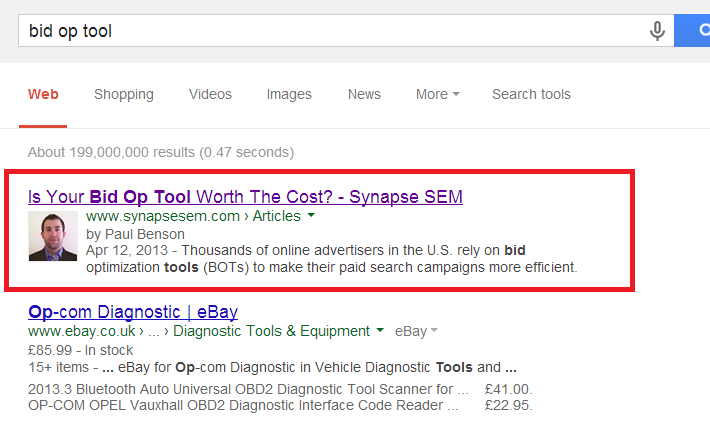Google Authorship: An Often Overlooked SEO Strategy
In the SEO world, quick and simple opportunities to boost performance are about as common as a cactus in Siberia. The reality is that successful SEO strategies are dependent on intensive content development efforts, carefully optimized on-page tags, and a thorough attention to detail with your site’s technical health. Those tasks don’t come easily, so when an opportunity as simple and impactful as Google Authorship comes along, SEO professionals should take notice.
Despite its low-hanging benefits, Google Authorship has surprisingly gone overlooked by many marketers. In this post we’ll discuss the key benefits of the program and why you should spend the minimal time required to enroll.
The most tangible benefit of Google Authorship is its ability to differentiate your search engine listings and ultimately increase click-through rate. When content on your site is written by authors enrolled in Google Authorship, the ranking page is eligible to appear with a headshot from the author’s Google Plus profile. In addition, the listing will appear with a byline giving credit to the individual author. Consider the results that appear for the Google search on the term “Bid Op Tool:”

These two factors increase the real estate of your listing and add visual appeal, both of which are likely to positively influence your click-through-rate. Google recently completed an eye tracking study to measure the impact of Authorship Tags on user behavior. According to their study, they found that users had a “60% chance of fixating on the annotation when placed at the top of the snippet block.” In plain English, search results with an Authorship tag are likely to get clicked more than standard results.
It is still unconfirmed whether Google Authorship is an active signal in Google’s algorithm, but many SEO professionals feel that strong “Author Rank” will be an important ranking factor in the future. Google’s Executive Chairman, Eric Schmidt, stated in his book that “information tied to verified online profiles will be ranked higher than content without such verification, which will result in most users naturally clicking on the top (verified) results. The true cost of remaining anonymous, then, might be irrelevance.” If this is true, we can also suspect that domains are likely to benefit if Google sees “expert” authors regularly publishing on their site. This would give organizations the incentive to build in-house content development teams focused on creating unique and valuable content.
These are obviously less tangible benefits that are harder to measure, but it is clear that Google values credibility and expertise. With increasingly more quantifiable metrics to support these qualities, it would be prudent to anticipate their inevitable impact on rankings.
Writers can sign up for Google’s Authorship Program in just a few minutes. You’ll need to create a Google Plus profile (if you don’t already have one) with a recognizable headshot, and a work email linked to the domain(s) on which you regularly publish.
For such a simple process, Google Authorship can have a strong impact on your SEO strategies. To learn more about building a Google Authorship strategy visit Google’s Inside Search Feature or contact us today.

